Thanks to AB 261 by Assemblymember Ash Kalra, California has gained a new official state symbol this year, our very own state mushroom — the California golden chanterelle!!
Thanks to AB 261 by Assemblymember Ash Kalra, California has gained a new official state symbol this year, our very own state mushroom — the California golden chanterelle!!

California has many official symbols representing our state, such as our state animal (California grizzly bear) and state flower (California poppy). Set by state law, California's state symbols provide significant natural, cultural, and historical meaning. Given California's wealth of natural resources and the essential role mushrooms play in maintaining our biodiversity, a state mushroom has finally been added to the family!
Recognition of a state mushroom honors and helps increase awareness and appreciation of the natural world. New species are being discovered, even as many others are threatened by habitat loss, climate change, and other factors. The idea is to highlight the mushroom’s pivotal role in nourishing our forests and grasslands, which is done through extensive belowground networks and symbiotic connections with plant roots. "Mushrooms decompose dead wood, improve groundwater quality and quantity, store carbon in the soil, and play a critical role in climate resilience and healthy soils," according to the bill's text.
Cantharellus californicus, also known as the California golden chanterelle, was selected due to its popularity, integral role, and symbiotic relationship with California’s ecosystem. The commonly collected edible mushroom — with a slightly fruity apricot scent and a nutty flavor when cooked with butter — is long loved by Californians. Moreso, it was recently recognized as a unique endemic species to the state, typically found in hardwood forests, especially under oak trees, making it the perfect recipient to further symbolize California's rich and unique biodiversity!

*Reminder: Please do not disturb, forage, poach, or consume wild mushrooms. Disturbing any mushroom species in a California state park is illegal and should only be conducted by an approved professional.
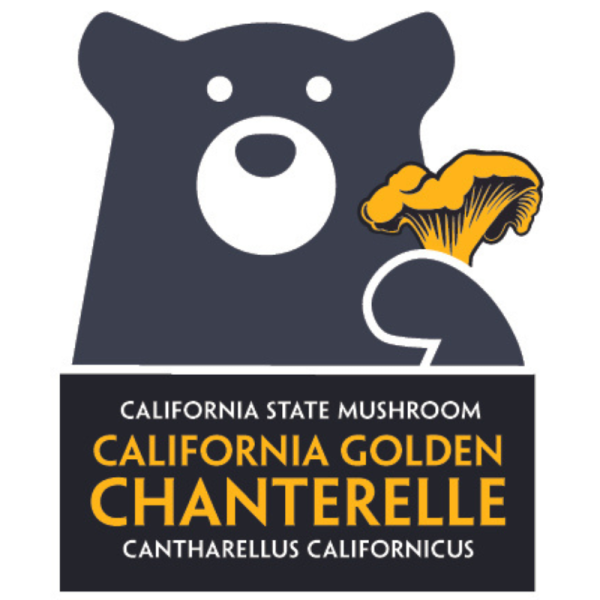
With the diversity of mushrooms in California, picking just one to represent the entire fungus kingdom is challenging. To choose, thousands of Californian fungiphiles – people who love and appreciate mushrooms – polled for their favorite six candidates in a statewide project conducted by the California Institute of Biodiversity and Mykoweb, one of the first internet mycology sites. Polling results and more information on how the state mushroom was selected can be found here.
Here are the runners-up (in order from most votes to least):
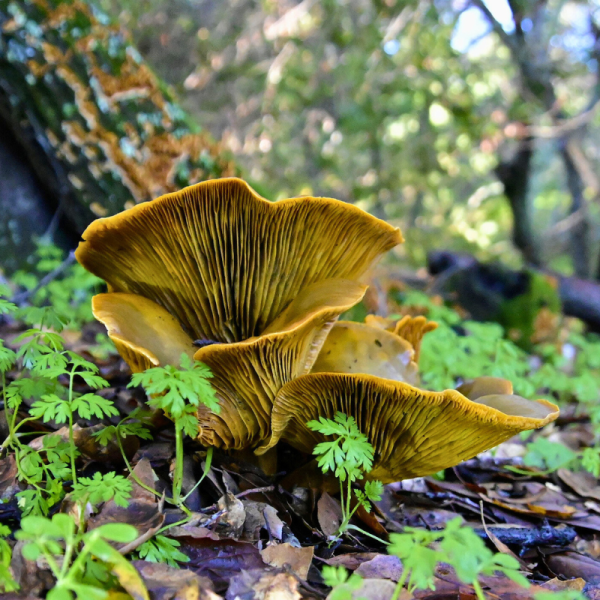
Named for its bioluminescence that glows in the dark, this mushroom is found almost exclusively in California oak woodlands throughout the state. Favored by knitters and crafters, it produces purples and greens for textile dyeing. This species is considered the toxic lookalike to the California Golden Chanterelle,
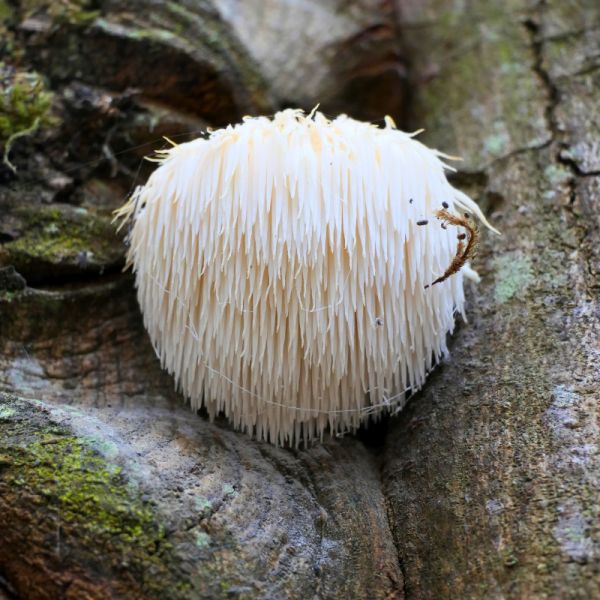
The distinct beard-like combs of this species make it easily identifiable. It is rare, despite wide distribution throughout the state, but can be found by looking up in oak trees. It is widely cultivated for its culinary value and reported beneficial properties.
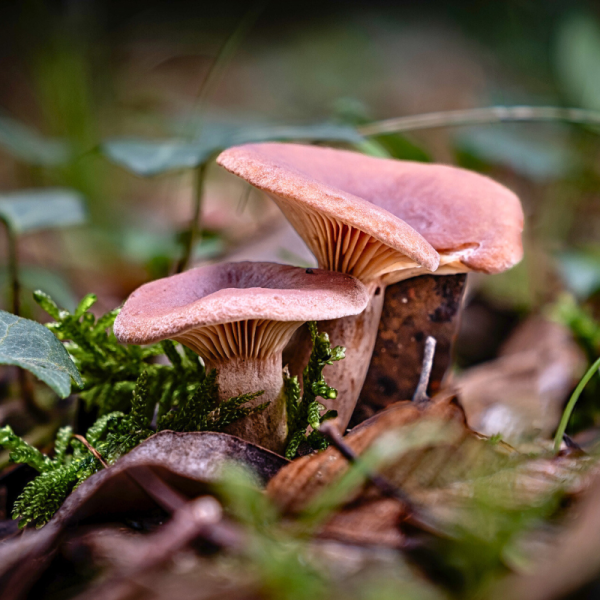
This unique edible mushroom is used mostly in desserts (cookies, ice cream, chocolates, etc.) due to the strong maple syrup aroma and flavor it gives off when dried. It is found in California and Oregon coastal ranges in mixed woodlands.
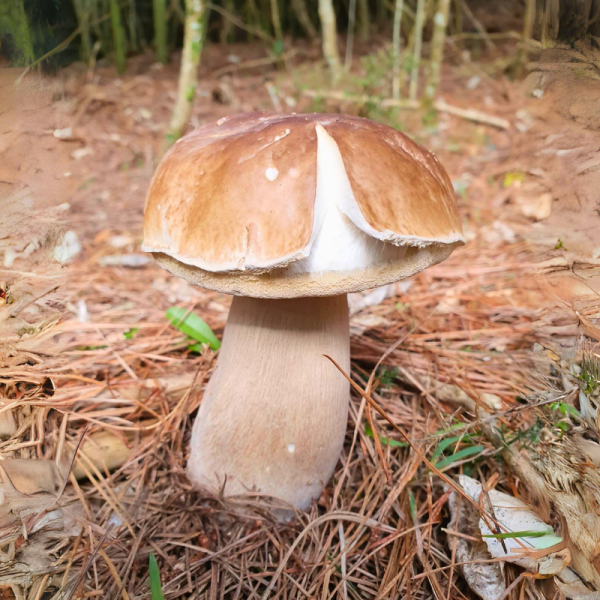
One of the largest boletes, this species is highly prized as an edible delight by recreational collectors and commercial pickers throughout the state.
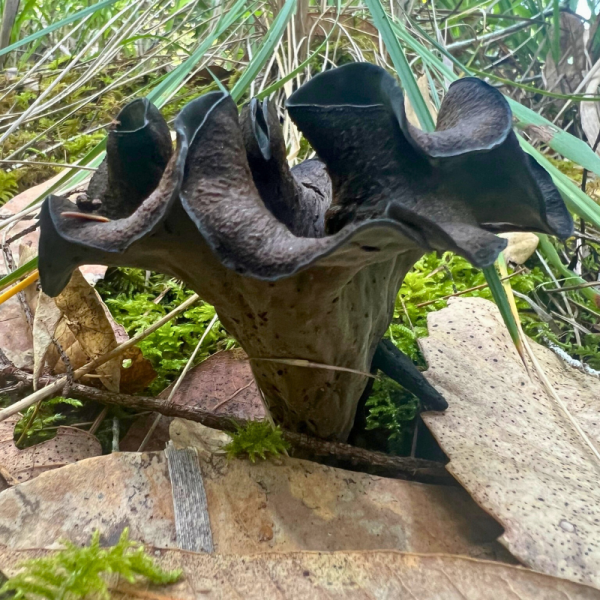
This difficult-to-spot but easily identified black, funnel-shaped mushroom is found abundantly in the northern half of the state. A choice edible
Want to learn more about the California golden chanterelle? Check out our YouTube short! Don't forget to like, comment, and subscribe to stay up-to-date with the latest from California State Parks Foundation.
Did you know that there is only one California state park, Salt Point State Park, which allows mushroom foraging? Unless you are an expert or in a group led by an expert, DO NOT disturb or consume any mushrooms you may find while foraging at the park. If you are interested in this practice, please watch our video during a guided mushroom foraging tour at Salt Point State Park!
In addition to the new state mushroom, California has added the Pallid bat (Antrozous pallidus) as the official California state bat! Check out our blog to learn how the pallid bat was chosen.
